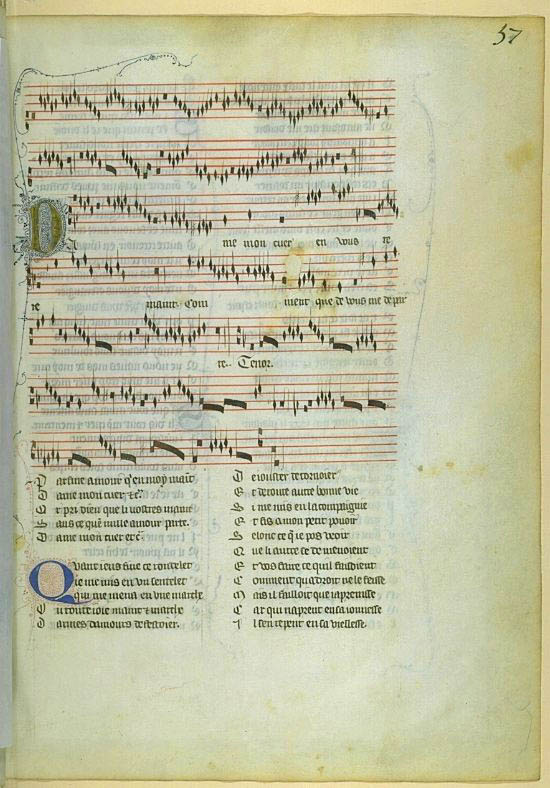Background
Ars Nova
In 14th Century France, Machaut had a large role to play in the development and application of the complex 'Ars Nova' notation, where rhythmic modes of earlier Medieval times were dismissed and replaced by a freer rhythmic system that encouraged use of isorhythmic patterns, and with more scope for both a composer, and for a greater creative role for the performer, in experssion. The Ars Nova gave way for a greater musical expressiveness and variety than had been possibly in the 13th century. For its time, it certainly was considered avant-garde, and even now it is held in high regard, and seen as a complex form of notation, despite the time difference. Machaut is considered to be the most effective and prolific user of the Ars Nova, in addition to being one of the innovators. This period of music is also known as "Ars Nova", in addition to its term in reference to the notation of the time.
Up to the time of Machaut, the approach to polyphony was "constructive" - as it was later termed. Composers worked from foundations - a base of melody or chant, either written with for the piece or from archives, and upper complementary parts are added later. Where this was a time when music and mathematics were closely linked, polyphony served as the closest thing to an aural equivelent of number, with a new and diverse opportunity for harmony and texturing: consonance and dissonance, isorhythms, rhythmic layring. Perhaps better examples of this could be seen in Machaut's motets than in this particular Mass, particularly in the isorhythm principle, which is not used in the Mass.
Even through a greater emphasis on rhythm, there grew, from Machaut, another possibility: melody-dominated polyphony. Obviously, monophonic music is melody-dominated; but Machaut, through trouvere background, wrote polyphony almost as accompanied song, where there was melodic presence.
during the Middle Ages, harmony had gone through several stages of development. From chant, single melody - monophony, to organum - homophony, and came a gradual progression toward true polyphony. In addition, rhythmic meter and rhythmic modes had been added to a musical palette. The Ars Nova was the culmination of all these developments, as each facet became more advanced, they combined, and a system of notation with more scope than any came to the fore.




